The potential merger between BHP and Anglo American has been a significant topic in the mining industry, with the possibility of creating the largest base metal company globally. However, the merger has faced multiple rejections and challenges.
Here are the key points of the merger proposal:
- Initial and Revised Proposals:
- BHP initially proposed a $38.8 billion all-share offer to acquire Anglo American, which included plans to demerge Anglo American’s platinum and iron ore assets in South Africa.
- The revised proposal increased the merger exchange ratio by 15%, offering Anglo American shareholders 16.6% ownership in the combined entity, up from 14.8% in the initial proposal.
- Rejections and Concerns:
- Anglo American’s board has consistently rejected BHP’s proposals, citing that they significantly undervalue the company and involve a highly complex structure with significant execution risks.
- The structure requires Anglo American to demerge its holdings in Anglo American Platinum and Kumba Iron Ore, which the board finds unattractive and risky for its shareholders.
- Focus on Copper:
- Both companies are heavily focused on copper due to its crucial role in the energy transition, with BHP aiming to become the world’s largest copper producer through this merger.
- The combined entity would control significant copper assets, including major mines in South America, enhancing BHP’s position in the copper market.
The merger faces potential regulatory scrutiny, particularly concerning market concentration in the copper sector and the impact on South African operations. BHP has proposed several socioeconomic measures to address these concerns, including maintaining employment levels and supporting local procurement in South Africa.
Ultimately, BHP has pulled its bid as of May 29th. With or without the deal, each mining giant has been figuring hard how to deal with their carbon emissions.
BHP’s Carbon Crusade and Net Zero Ambitions
BHP has committed to achieving net zero operational (Scope 1 and 2) emissions by 2050. Their medium-term target is a 30% reduction from adjusted FY2020 levels by FY2030, involving an investment of around $4 billion. Key initiatives include transitioning from diesel to battery-powered haul trucks, which are more efficient, and investing in renewable energy sources to power their operations, especially in Western Australia and Chile.
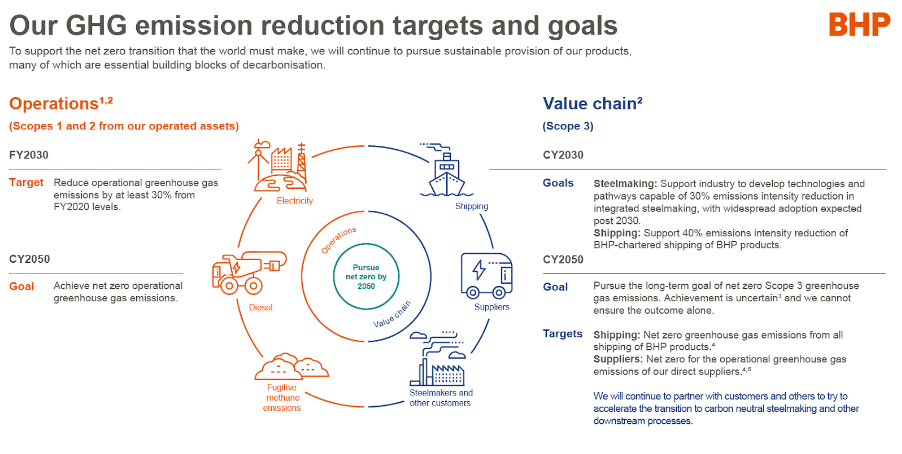
For example, BHP plans to build 500 megawatts of renewable energy and storage capacity to meet increased power demand from their operations as they transition to electric haul trucks.
While BHP prioritizes internal GHG emission reduction, they recognize the temporary role of high-integrity carbon credits. The mining titan doesn’t plan to use carbon credits for operational GHG emission reduction medium-term targets. However, if abatement projects do not achieve the expected GHG reductions, BHP retains the flexibility to use high-integrity carbon credits toward their 2030 climate targets.
BHP’s Scope 3 emissions, which account for 97% of their total emissions, are predominantly from the use of their products by customers. While BHP aims to achieve net zero Scope 3 emissions by 2050, this remains an aspirational goal rather than a strict target.
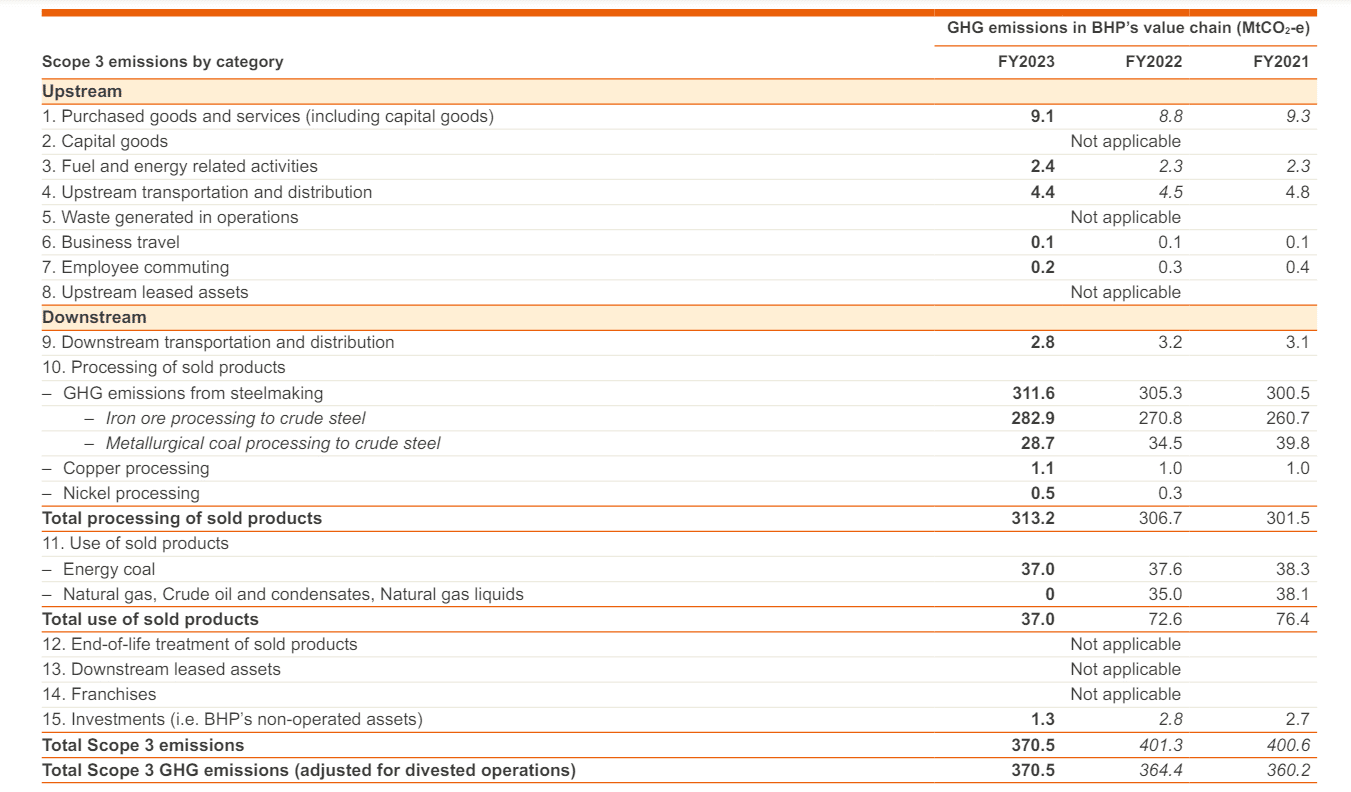
They are focusing on developing low-carbon technologies in collaboration with the steelmaking industry, such as hydrogen-based Direct Reduced Iron (DRI) plants. BHP also supports carbon capture and storage (CCS) technologies, although these have faced criticisms for their limited effectiveness and low capture rates.
BHP Carbon Emissions:
- Scope 1 emissions (direct emissions from operations) in FY2023: 7.5 million tonnes CO2e
- Scope 2 emissions (indirect emissions from purchased electricity/energy) in FY2023: 5.0 million tonnes CO2e
- Scope 3 emissions (indirect emissions from value chain) in FY2023: 95.8 million tonnes CO2e
READ MORE: BHP to Spend $4B to Decarbonize by 2030, Carbon Emissions Spikes Up Near-Term
Anglo American’s Eco Revolution: Slashing Emissions in Style
Anglo American aims to achieve carbon neutrality across its operations by 2040. Interim targets include reducing these emissions by 30% by 2030. Their FutureSmart Mining™ program is central to this effort, leveraging technology and digitalization to enhance sustainability.
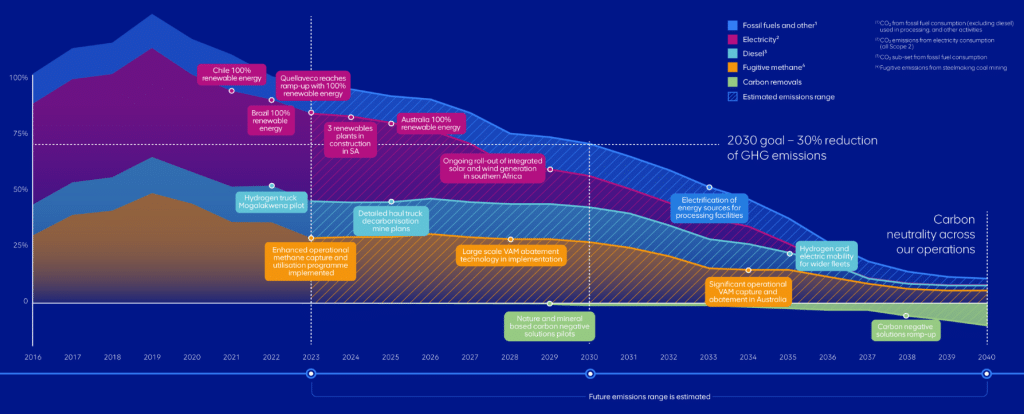
Notable initiatives include securing 100% renewable electricity for operations in Brazil, Chile, and Peru, and developing hydrogen fuel cell and battery hybrid trucks, which are set to replace diesel trucks across their global fleet from 2024.
Anglo American has set an ambitious target to reduce Scope 3 emissions by 50% by 2040. This will be achieved by working with customers and technology partners to decarbonize the steel industry and by making changes in their product portfolio.
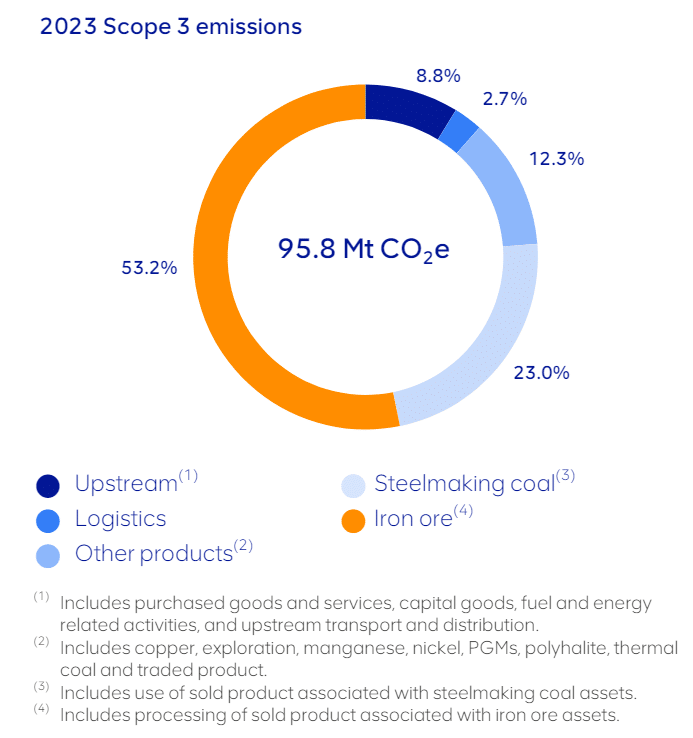
They are also focused on improving efficiencies and controlling emissions within their supply chain and logistics, particularly in shipping.
Anglo American carbon emissions:
-
- Scope 1 emissions in 2023: 7.5 million tonnes CO2e
- Scope 2 emissions in 2023: 5.0 million tonnes CO2e
- Scope 3 emissions in 2023: 95.8 million tonnes CO2e
The British mining giant is making significant progress in reducing emissions from Scope 3 sources. Processing iron ore remains the largest contributor, with steelmaking accounting for 50.9 Mt CO2e, or 47% of total emissions in 2023. The emissions intensity of the company’s iron ore has decreased by 5% in 2023 compared to the 2020 baseline.
Anglo American plans to reduce its Scope 3 emissions by prioritizing 7 initiatives over four themes, as specified in its Climate Change Report 2023.
Cutting-Edge Clean Energy and Decarbonization Projects
BHP is investing in several clean energy and decarbonization projects. They are trialing “dynamic charging” for electric haul trucks, allowing them to be charged while in operation. In addition, they are developing carbon capture projects with steelmakers and exploring various renewable energy projects to power their operations.
Despite these efforts, BHP has acknowledged that short-term emissions may increase due to production growth before significant reductions are realized.
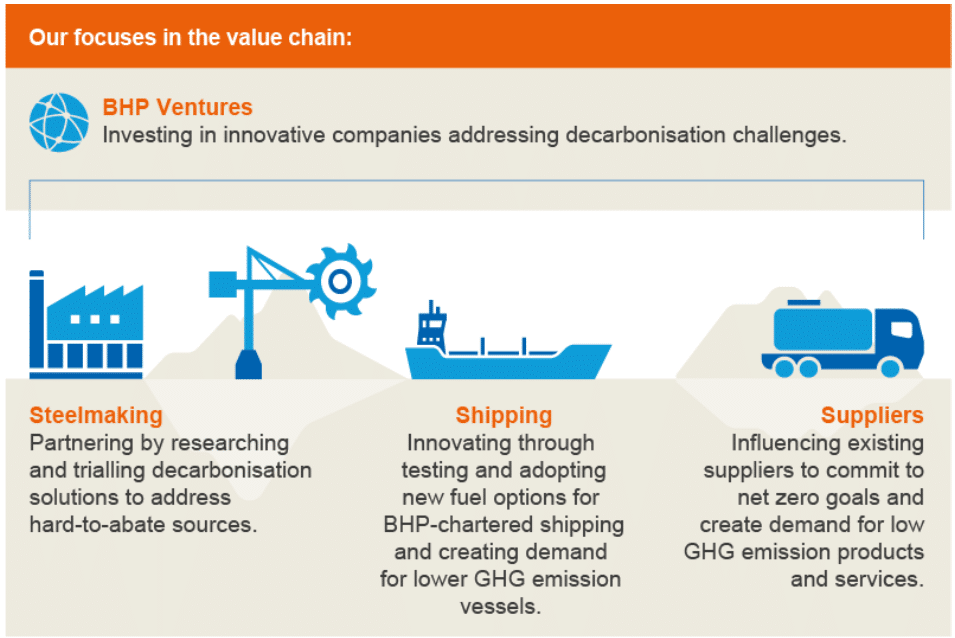
Similarly, Anglo American is actively engaging in clean energy projects as part of their decarbonization strategy. Their partnership with EDF Renewables aims to ensure that all electricity used by 2030 will come from zero-emission sources.
They have already achieved a 100% renewable electricity supply for their operations in several countries and are developing hydrogen-powered haul trucks to replace diesel ones. These initiatives are expected to significantly reduce their carbon footprint and contribute to their net zero goals.
The potential merger between BHP and Anglo American may have faced significant challenges, but both companies remain steadfast in their commitment to reducing carbon emissions and advancing towards net zero goals. Both miners are leveraging technology and strategic partnerships to drive their decarbonization efforts.

